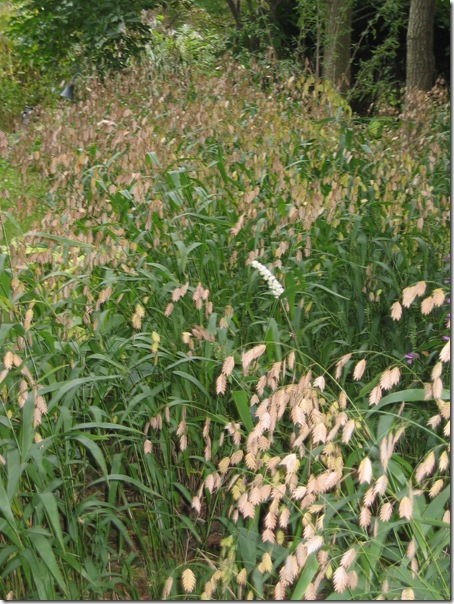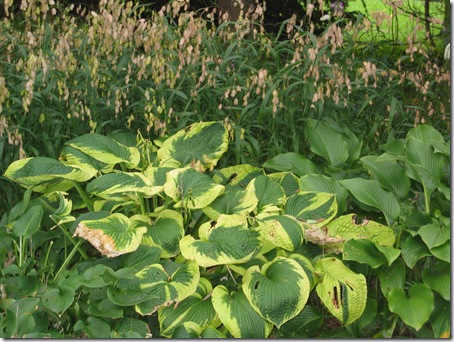I fell in love with chasmanthium the first time I saw it.
It’s a 3 foot tall, green perennial grass that emerges in the spring. During the fall, with its yellow- orange color and a backlit sun in late afternoon, it’s a star of the garden. It’s like a prairie setting in a movie, swaying with the slightest breeze.
One spring, I bought several.
I loved them for three years. But then I noticed that the hostas and alliums were disappearing. I dug around and saw that chasmanthium had become invasive and was smothering the other plants.
I trashed all of them.
Although I paid a price for using chasmanthium, I learned a valuable lesson.
Information on the web and plant labels can be misleading. Climate and where a plant is placed in a garden effects its growth pattern. I’ve seen plants that are barely a foot tall in the east and over 5 feet tall on the west coast.
If you decide to buy a plant that’s difficult to control, you’ll need to be vigilant about pulling out all of its seedlings. Everyday. They’re like ants that spread more quickly than you can catch them.
And you damn well better love it!
You might want to check out a post I read a few years ago on Natives vs. Aliens.




